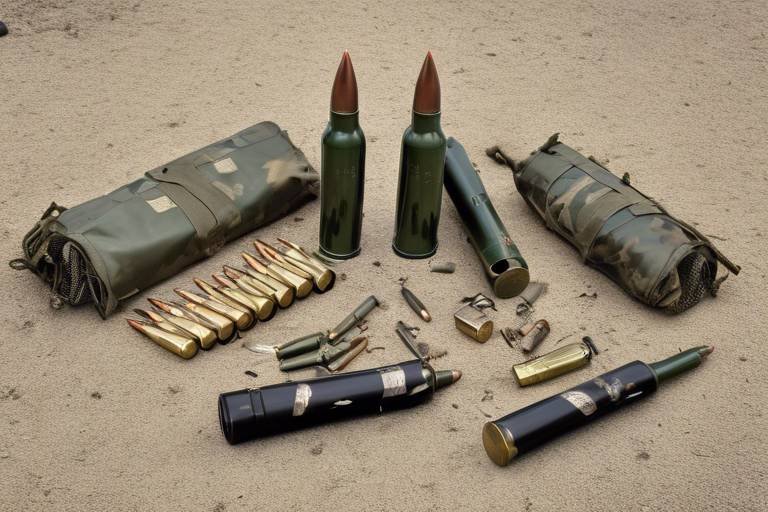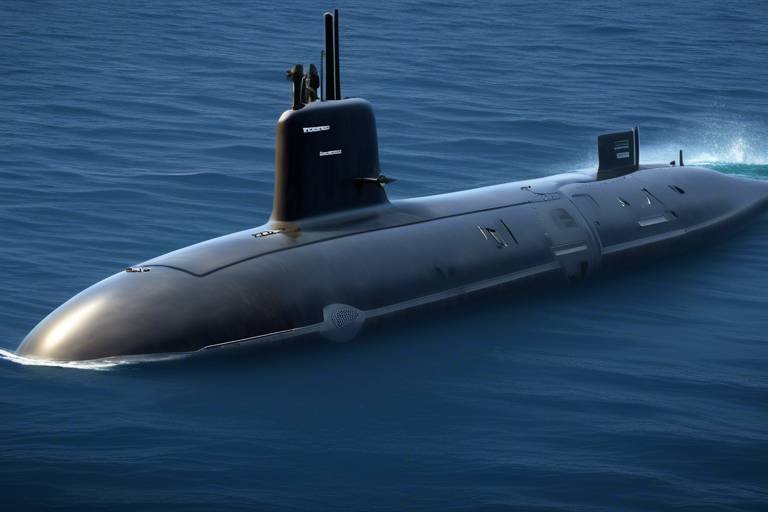Future Technologies in Military Aviation - What's Next?
The landscape of military aviation is on the brink of a technological revolution that promises to reshape how armed forces operate in the sky. With advancements in various fields, including artificial intelligence, drone technology, and materials science, the future of aerial combat and reconnaissance is becoming increasingly sophisticated. Imagine a world where aircraft can fly autonomously, make real-time decisions, and adapt to changing combat scenarios without human intervention. Sounds like science fiction, right? Well, it's closer to reality than you might think!
As we delve deeper into these innovations, it's essential to recognize how they will not only enhance operational capabilities but also affect strategic military planning. The integration of cutting-edge technologies in military aviation is akin to upgrading from a flip phone to a smartphone; the possibilities expand exponentially. In this article, we will explore the emerging trends and technologies that are setting the stage for the next generation of military aviation.
Unmanned aerial vehicles (UAVs) have become a cornerstone of modern military operations. Their ability to conduct missions without risking pilot lives has changed the game entirely. Today, drones are not just for surveillance; they are equipped with advanced weaponry and can perform complex combat missions. Recent developments include enhanced sensor technology that allows for real-time data collection and improved communication systems that enable seamless integration with other military assets.
Moreover, the versatility of drones means they can be deployed in various roles, such as:
- Surveillance: Monitoring enemy movements and gathering intelligence.
- Reconnaissance: Assessing battlefield conditions and identifying targets.
- Combat: Engaging enemy forces with precision strikes.
As drone technology continues to evolve, we can expect even more sophisticated UAVs that can operate in contested environments, making them invaluable assets in future conflicts.
Artificial intelligence is not just a buzzword; it's transforming how military aircraft operate. By integrating AI into flight operations, military forces can enhance decision-making processes, optimize mission planning, and improve overall efficiency. Imagine a scenario where an AI system analyzes vast amounts of data to provide real-time recommendations to pilots, significantly reducing response times during critical situations.
The rise of autonomous systems is changing the landscape of military aviation. These systems can operate independently, executing missions without direct human control. However, the transition to fully autonomous flight operations brings both exciting opportunities and significant challenges. While autonomy can reduce the risk to human life, it also raises questions about reliability and ethical implications in warfare.
Rather than replacing human pilots, the future of military aviation may lie in human-machine collaboration. By leveraging AI, pilots can make more informed decisions while allowing machines to handle routine tasks. This partnership can enhance situational awareness and operational effectiveness, but it also requires rigorous training and trust in the technology. After all, would you trust a machine to make life-and-death decisions in combat?
AI's role extends beyond the cockpit; it is also revolutionizing aircraft maintenance and logistics. Predictive maintenance powered by AI can forecast potential failures before they occur, ensuring aircraft remain operational and reducing costly downtimes. This innovation is akin to having a personal mechanic who knows your vehicle better than you do!
Innovations in materials science are leading to lighter, stronger aircraft. The development of advanced composites and alloys not only enhances fuel efficiency but also improves overall performance. Imagine aircraft that are more agile and capable of carrying heavier payloads without compromising speed. These advancements are crucial for maintaining air superiority in future conflicts.
As military aviation evolves, so do the designs and technologies of combat aircraft. Next-generation fighter jets are being developed with advanced features that enhance their capabilities on the battlefield. These aircraft are designed to be faster, stealthier, and more lethal than their predecessors. Think of them as the superheroes of the skies, equipped with the latest gadgets and technology.
Stealth technology remains a critical factor in military aviation. The latest advancements focus on materials and designs that reduce radar signatures, making it harder for enemies to detect and engage these aircraft. This evolution in stealth capabilities is essential for executing surprise attacks and maintaining the element of surprise in combat operations.
Hypersonic technology promises to revolutionize air combat, enabling aircraft to travel at speeds greater than five times the speed of sound. This capability not only enhances maneuverability but also provides strategic advantages on the battlefield. Imagine being able to strike an enemy target before they even know you're there! Hypersonic flight could change the rules of engagement entirely.
Q: How will drone technology impact future military operations?
A: Drone technology will enhance surveillance, reconnaissance, and combat capabilities while reducing the risks to human pilots.
Q: What role does AI play in military aviation?
A: AI improves decision-making, mission planning, and maintenance, making military operations more efficient and effective.
Q: Are fully autonomous aircraft safe?
A: While autonomous aircraft can reduce risks to human life, they present challenges related to reliability and ethical concerns in combat.
Q: What advancements are being made in stealth technology?
A: Innovations focus on materials and designs that minimize radar signatures, enhancing the ability to evade detection.
Q: How does hypersonic technology change air combat?
A: Hypersonic technology allows for unprecedented speed and maneuverability, providing strategic advantages in engagements.

Advancements in Drone Technology
Unmanned Aerial Vehicles (UAVs), commonly known as drones, are not just cool gadgets anymore; they are becoming the backbone of modern military operations. The rapid advancements in drone technology are reshaping how military forces conduct surveillance, reconnaissance, and even combat missions. Imagine a world where a drone can fly into hostile territory, gather intelligence, and return without putting a single pilot at risk. This is not science fiction; it's happening right now.
One of the most significant developments in drone technology is the increase in autonomy. Modern drones are equipped with sophisticated algorithms and sensors that allow them to operate with minimal human intervention. This not only enhances their operational capabilities but also reduces the cognitive load on human operators. For instance, drones can now autonomously navigate complex environments, avoid obstacles, and adapt to changing conditions in real-time. These features are crucial in combat scenarios where every second counts.
Moreover, drones are becoming more versatile. The latest models can be equipped with a range of payloads, from surveillance cameras to precision-guided munitions. This flexibility allows military forces to tailor their drone operations to specific mission requirements. For example, a reconnaissance drone can be fitted with high-resolution imaging systems to gather critical intelligence, while an attack drone can carry out precision strikes on enemy targets. The ability to switch roles quickly is a game-changer in the field.
Another exciting advancement is the integration of swarming technology. Picture a fleet of drones working together like a school of fish, coordinating their movements to overwhelm enemy defenses. Swarming technology allows multiple drones to communicate and collaborate, making them more effective in executing complex missions. This collective approach can confuse adversaries and create opportunities for tactical advantages.
However, with these advancements come challenges. The increased reliance on drones raises questions about security and ethics. As drones become more autonomous, the potential for misuse or malfunction increases. What happens if a drone makes a mistake and causes unintended harm? These are critical considerations that military strategists must address as they integrate drones into their operations.
Another aspect to consider is the impact of drone technology on international relations. As countries develop advanced drone capabilities, there is a potential for an arms race in UAV technology. This could lead to heightened tensions and conflicts as nations vie for superiority in the skies. Therefore, establishing international norms and regulations around drone usage is essential to prevent escalation and ensure responsible use.
In conclusion, the advancements in drone technology are not just about flying machines; they represent a fundamental shift in military strategy and operations. As drones become more autonomous, versatile, and capable of working in swarms, they will undoubtedly play a crucial role in future conflicts. The military landscape is evolving, and staying ahead of these technological trends is vital for national security.
- What are the primary uses of drones in the military? Drones are primarily used for surveillance, reconnaissance, and combat missions. They can gather intelligence, conduct targeted strikes, and provide real-time situational awareness.
- How do autonomous drones operate? Autonomous drones use advanced algorithms and sensors to navigate, avoid obstacles, and adapt to changing environments with minimal human input.
- What are the ethical concerns surrounding drone warfare? Ethical concerns include the potential for collateral damage, accountability for mistakes, and the implications of using machines to make life-and-death decisions.
- How is swarming technology beneficial for military operations? Swarming technology allows multiple drones to work together, creating tactical advantages by overwhelming enemy defenses and executing complex missions more effectively.
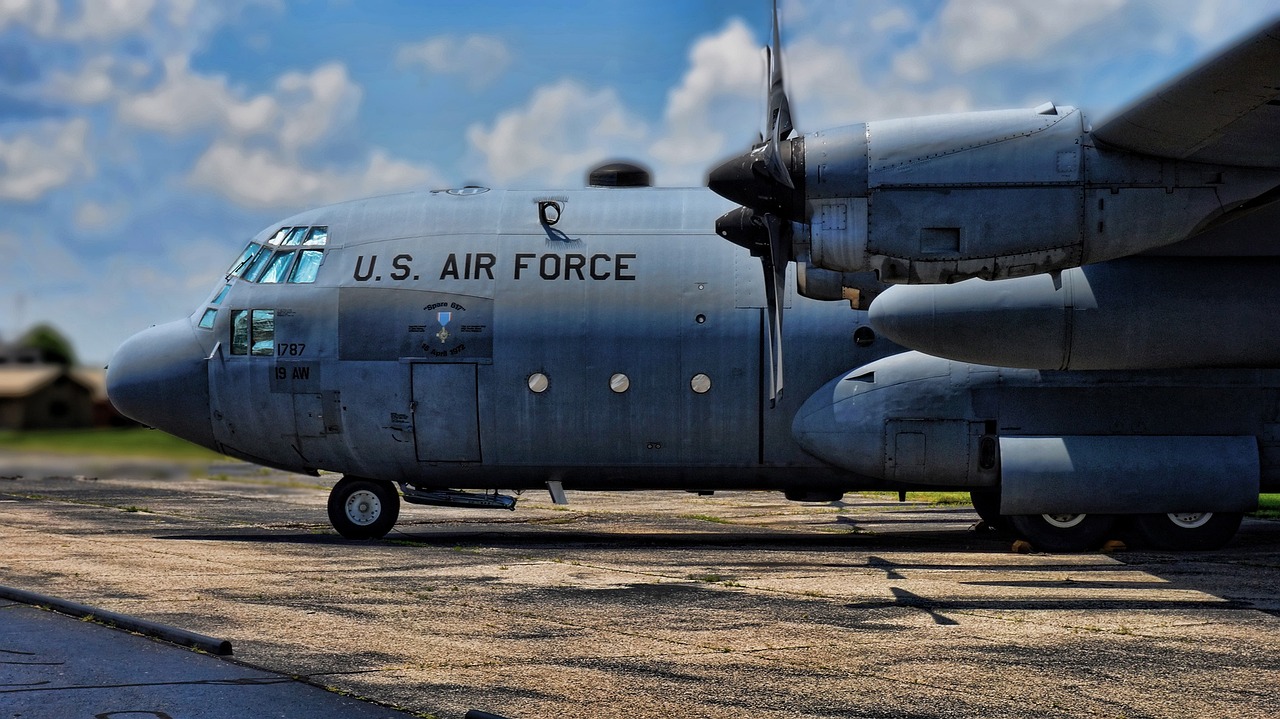
Artificial Intelligence in Flight Operations
Artificial Intelligence (AI) is not just a buzzword; it's a game-changer in the realm of military aviation. Imagine a world where aircraft can think, adapt, and make decisions in real-time, just like a human pilot. This is becoming a reality as AI technologies are integrated into flight operations, enhancing the capabilities of military aircraft and redefining how missions are executed. From mission planning to in-flight decision-making, AI is transforming the way military forces operate in the skies.
One of the most significant impacts of AI in flight operations is its ability to process vast amounts of data at lightning speed. During a mission, aircraft gather data from various sources, including sensors, satellite feeds, and other intelligence inputs. AI algorithms can analyze this data in real-time, providing pilots with critical insights that enhance situational awareness. For instance, if a pilot is engaged in a complex combat scenario, AI can quickly assess threats, suggest evasive maneuvers, and even predict enemy movements. This not only improves the chances of mission success but also significantly enhances pilot safety.
Moreover, AI is also playing a crucial role in autonomous flight systems. These systems allow military aircraft to operate without human intervention, which can be particularly useful in high-risk environments. Imagine sending a drone into a hostile area to gather intelligence while keeping human pilots safely out of harm's way. However, the integration of AI into autonomous systems does not come without challenges. Issues such as reliability, ethical considerations, and the need for robust cybersecurity measures must be addressed to ensure these systems can operate effectively and safely.
Another fascinating aspect of AI in flight operations is human-machine collaboration. Instead of replacing human pilots, AI is designed to assist them. This collaboration can lead to enhanced performance, as AI can take over routine tasks, allowing pilots to focus on more complex decision-making. For example, during a long flight, AI can manage navigation and fuel consumption, while the pilot concentrates on tactical planning and communication with ground forces. However, this collaboration also raises questions about trust and dependency. How much should pilots rely on AI? What happens if the system fails? These are critical issues that need to be addressed as we move forward.
Additionally, AI is transforming the maintenance and logistics of military aviation. Predictive maintenance powered by AI algorithms can analyze data from aircraft systems to predict potential failures before they occur. This proactive approach not only ensures operational readiness but also reduces downtime and maintenance costs. For example, instead of following a fixed maintenance schedule, AI can recommend maintenance actions based on actual aircraft performance and usage patterns. This shift from reactive to proactive maintenance is a significant leap forward in keeping military aircraft in the air and ready for action.
In conclusion, the integration of Artificial Intelligence in flight operations is revolutionizing military aviation. From enhancing situational awareness and decision-making to improving maintenance and logistics, AI is paving the way for a new era of military capabilities. As we continue to explore the possibilities of AI, it is essential to navigate the challenges and ethical considerations that accompany these advancements. The future of military aviation is not just about faster jets or more advanced weapons; it's about smarter, more efficient operations that leverage the power of technology to protect and serve.
- How does AI improve situational awareness in military aviation?
AI processes data from various sources quickly, providing pilots with critical information to make informed decisions during missions. - Can AI systems operate autonomously without human intervention?
Yes, AI can enable aircraft to operate autonomously, particularly in high-risk environments, but challenges such as reliability and ethics must be addressed. - What are the benefits of human-machine collaboration in flight operations?
Human-machine collaboration allows pilots to focus on complex tasks while AI handles routine operations, enhancing overall mission effectiveness. - How does AI affect aircraft maintenance?
AI enables predictive maintenance by analyzing aircraft data to anticipate failures, ensuring operational readiness and reducing maintenance costs.
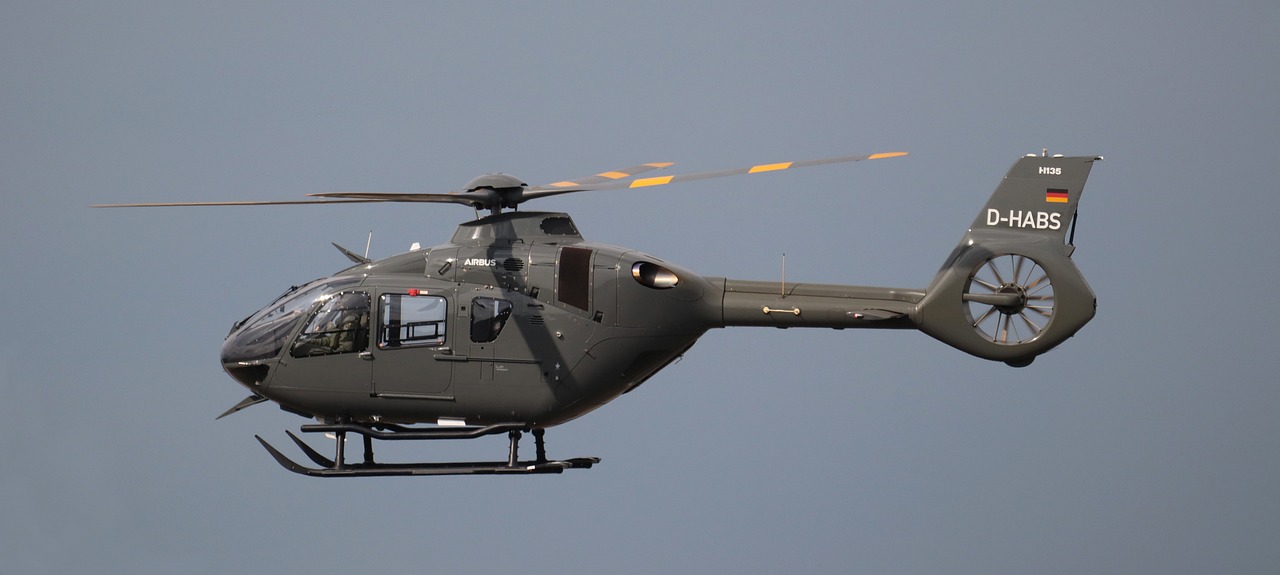
Autonomous Flight Systems
The rise of is reshaping the landscape of military aviation in ways we never thought possible. Imagine a world where aircraft can operate without a human pilot, navigating complex environments, making split-second decisions, and executing missions with precision. These systems are not just a figment of science fiction; they are becoming a reality, and their potential is staggering. Autonomous flight technology leverages advanced algorithms, sensors, and machine learning to create aircraft that can fly, analyze, and adapt to dynamic combat situations.
One of the most fascinating aspects of these autonomous systems is their ability to conduct surveillance and reconnaissance missions with minimal human intervention. For instance, drones equipped with sophisticated imaging and data-gathering technologies can cover vast areas efficiently, providing real-time intelligence to command centers. This capability allows military forces to maintain a tactical advantage, as they can gather information without risking human lives. Moreover, the integration of these systems into existing military frameworks is paving the way for a new era of warfare where speed and efficiency are paramount.
However, the deployment of autonomous flight systems does not come without its challenges. The technology must overcome various hurdles, including regulatory issues, technical limitations, and the need for robust cybersecurity measures. As these systems become more prevalent, ensuring their safety and reliability is crucial. For example, if an autonomous aircraft experiences a malfunction or is hacked, the consequences could be catastrophic. Therefore, military organizations are investing heavily in research and development to address these challenges and ensure that autonomous systems can operate securely and effectively.
To illustrate the capabilities of autonomous flight systems, consider the following table that highlights some of the key features and advantages:
| Feature | Advantage |
|---|---|
| Real-time Data Processing | Enables quick decision-making during missions |
| Reduced Risk to Personnel | Minimizes human casualties in combat scenarios |
| Extended Flight Duration | Allows for longer missions without pilot fatigue |
| Cost Efficiency | Reduces operational costs by minimizing crew requirements |
As we look to the future, the integration of autonomous flight systems into military aviation seems inevitable. These systems hold the promise of transforming how we approach warfare, enhancing operational capabilities while keeping our personnel safe. However, as with any technological advancement, it is essential to tread carefully, ensuring that ethical considerations and safety protocols are prioritized. The balance between leveraging technology and maintaining human oversight will be critical as we navigate this new frontier in military aviation.
- What are autonomous flight systems?
Autonomous flight systems are aircraft that can operate without human pilots, utilizing advanced technology to navigate, make decisions, and execute missions independently.
- What are the benefits of using autonomous flight systems in military operations?
These systems offer numerous benefits, including enhanced surveillance capabilities, reduced risk to personnel, extended flight durations, and cost efficiency.
- What challenges do autonomous flight systems face?
Challenges include regulatory issues, technical limitations, the need for robust cybersecurity, and ensuring safety and reliability in operations.
- How does AI contribute to autonomous flight systems?
AI enhances autonomous flight systems by enabling real-time data processing, decision-making, and adaptability in dynamic environments.
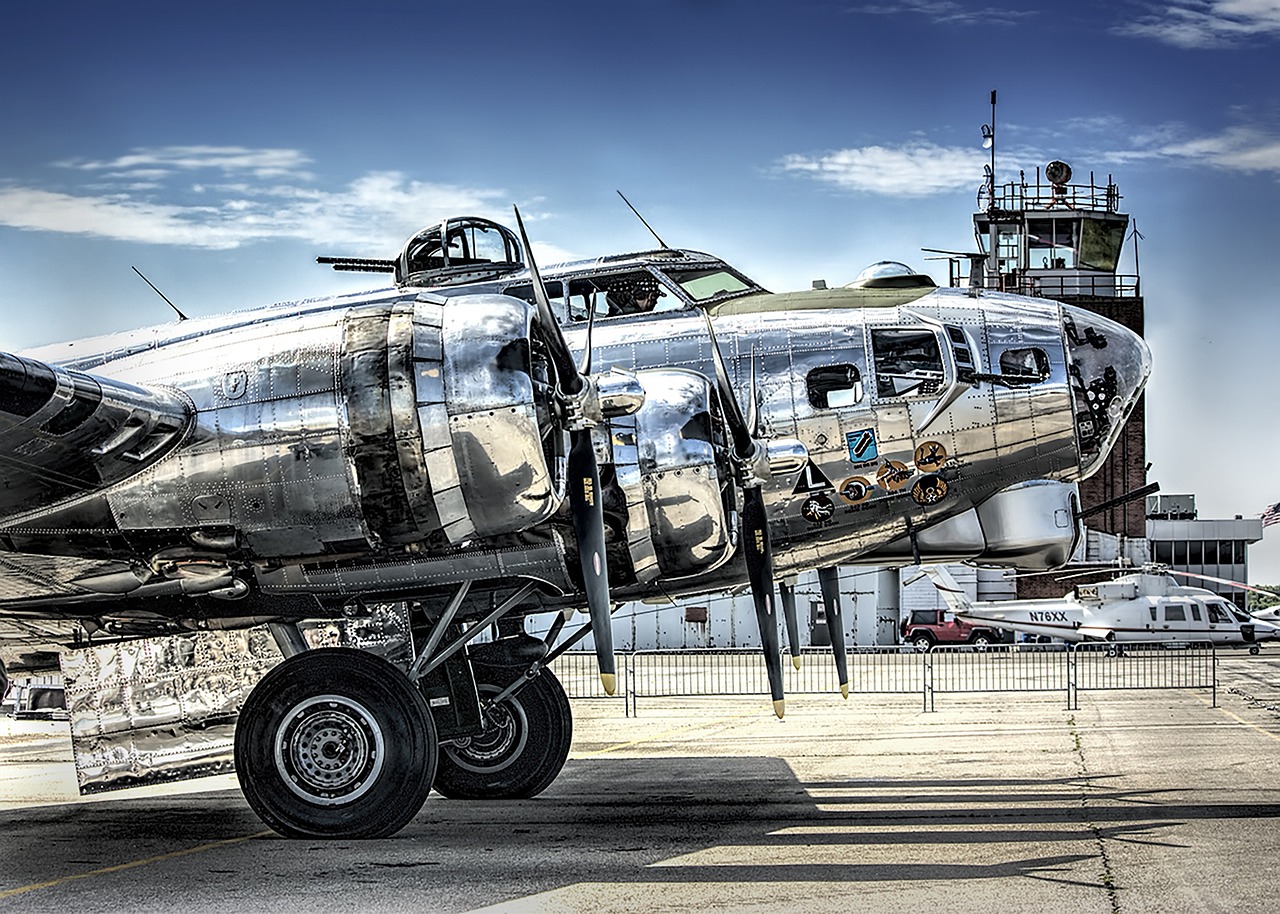
Human-Machine Collaboration
In the rapidly evolving world of military aviation, the synergy between human pilots and artificial intelligence (AI) is becoming a game-changer. Imagine a cockpit where the pilot is not just a controller but a collaborator with an intelligent system that can analyze data in real-time, predict outcomes, and suggest strategies. This collaboration is not about replacing the human element; rather, it enhances the pilot's capabilities, making missions more efficient and effective.
One of the most significant advantages of human-machine collaboration is the ability to process vast amounts of information quickly. For instance, during a combat mission, a human pilot can focus on tactical maneuvers while the AI system analyzes enemy movements, weather conditions, and potential threats. This dual approach allows for a more comprehensive situational awareness, which is crucial in high-stakes environments. However, the integration of AI into flight operations does come with its own set of challenges.
Trust is a critical factor in this collaboration. Pilots must rely on AI systems to make split-second decisions, but how can they be sure that the AI has made the right choice? This is where training and simulation play a vital role. By exposing pilots to various scenarios where AI assists in decision-making, they can build trust and confidence in the technology. Moreover, the AI must be designed to communicate its reasoning clearly to the pilot, ensuring that the human operator remains in the loop.
Another aspect to consider is the potential for information overload. While AI can process data at lightning speed, it can also generate a vast amount of information that may overwhelm a human operator. To combat this, developers are focusing on creating intuitive interfaces that highlight the most critical data, allowing pilots to make informed decisions without getting bogged down by unnecessary details.
Furthermore, the collaboration between humans and machines is not limited to combat scenarios. In training environments, AI can simulate various flight conditions, providing pilots with a safe space to practice and hone their skills. This not only accelerates the learning curve but also prepares them for real-life situations where quick thinking and adaptability are paramount.
As we look to the future, the evolution of human-machine collaboration in military aviation holds immense potential. It promises to redefine how we approach aerial warfare, ensuring that pilots are better equipped to face the challenges of modern combat. The balance between human intuition and machine precision could very well be the key to maintaining air superiority in the years to come.
- What is human-machine collaboration in military aviation?
It refers to the partnership between human pilots and AI systems, where both work together to enhance flight operations, decision-making, and mission effectiveness. - How does AI assist pilots during missions?
AI analyzes real-time data, predicts outcomes, and suggests strategies, allowing pilots to focus on tactical maneuvers and situational awareness. - What are the challenges of human-machine collaboration?
Key challenges include building trust in AI systems, managing information overload, and ensuring clear communication between the AI and the pilot. - Can AI replace human pilots in the future?
While AI can enhance capabilities, the human element remains crucial for decision-making and adaptability in unpredictable combat scenarios. - How is training for pilots evolving with AI?
AI can create realistic flight simulations, allowing pilots to practice various scenarios safely and effectively, thus accelerating their learning process.

AI in Maintenance and Logistics
Artificial Intelligence (AI) is not just transforming how military aircraft are flown; it is also making a significant impact on the maintenance and logistics of these complex machines. Imagine a world where aircraft maintenance is not only faster but also smarter. With AI, this is becoming a reality. AI systems can analyze vast amounts of data from various sensors embedded in aircraft, predicting potential failures before they happen. This proactive approach minimizes downtime and ensures that aircraft are always mission-ready.
One of the most exciting aspects of AI in maintenance is its ability to perform predictive analytics. By monitoring the health of various components in real-time, AI can identify wear and tear that human technicians might overlook. For instance, if a particular engine part shows signs of stress, AI can alert the maintenance crew to inspect or replace it before it leads to a more significant issue. This not only saves time but also significantly reduces maintenance costs.
Moreover, AI enhances logistical operations by optimizing supply chain management. When it comes to military aviation, having the right parts available at the right time is crucial. AI algorithms can analyze usage patterns and predict future needs, ensuring that spare parts are stocked efficiently. This level of foresight can drastically cut down on delays caused by waiting for parts, which can be the difference between mission success and failure.
Additionally, AI can streamline the entire maintenance workflow. By integrating AI with existing maintenance management systems, military forces can automate routine tasks such as scheduling inspections and tracking inventory. This not only frees up human personnel to focus on more complex tasks but also increases overall efficiency. The result? A more agile and responsive military aviation sector that can adapt quickly to changing operational needs.
In the realm of logistics, AI can assist in route optimization for transporting parts and personnel. By analyzing traffic patterns and potential bottlenecks, AI can suggest the most efficient routes, saving both time and resources. This capability is especially crucial in combat scenarios where every second counts. Furthermore, AI can support decision-making processes by providing real-time data analytics, allowing commanders to make informed choices quickly.
However, the integration of AI into maintenance and logistics is not without its challenges. Concerns about data security and the reliability of AI systems must be addressed. Moreover, training personnel to work alongside AI technologies is essential to fully leverage their capabilities. As we look to the future, the collaboration between human expertise and AI efficiency will redefine the standards of military aviation maintenance and logistics.
- What are the main benefits of using AI in military aviation maintenance?
AI allows for predictive maintenance, reduces downtime, and optimizes logistics, leading to enhanced operational readiness. - How does AI improve logistics in military aviation?
AI analyzes data to optimize supply chains, ensuring that necessary parts are available when needed and streamlining transportation routes. - Are there any risks associated with AI in military maintenance?
Yes, challenges include data security concerns and the need for proper training for personnel to work effectively with AI systems.
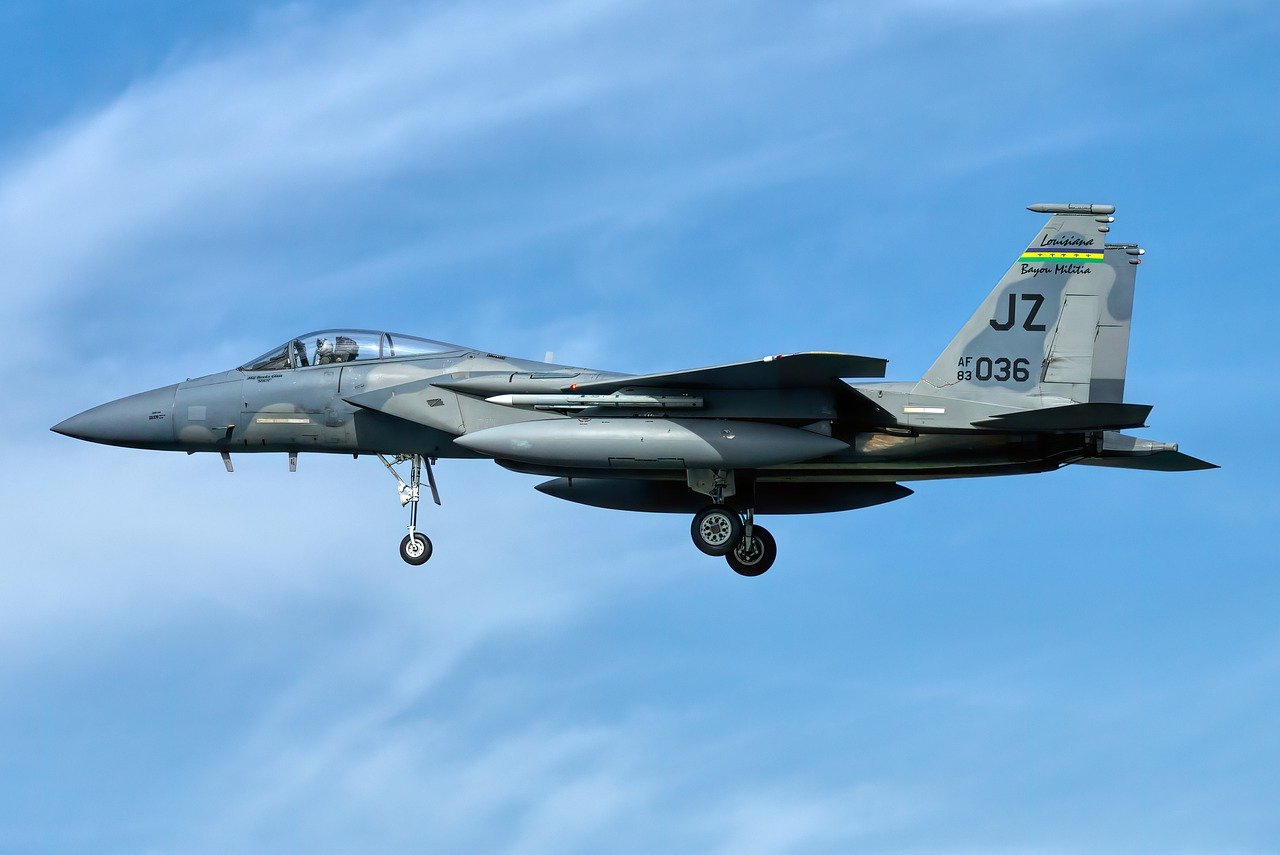
Enhanced Materials and Design
The landscape of military aviation is undergoing a remarkable transformation, thanks to innovations in materials science. These advancements are not just about making aircraft lighter; they are about enhancing performance, increasing durability, and improving fuel efficiency. Imagine an aircraft that can withstand extreme conditions while being agile and quick—this is the future we are heading towards. The integration of new materials such as composites and advanced alloys is paving the way for aircraft that can operate at higher altitudes and speeds, giving military forces a strategic edge.
One of the most exciting developments in this field is the use of carbon fiber reinforced polymers (CFRP). These materials are not only lighter than traditional metals but also boast exceptional strength and resistance to corrosion. This means that aircraft can be designed with a more aerodynamic shape, reducing drag and improving fuel efficiency. The result? Increased range and operational capability, which are crucial in modern warfare scenarios.
Furthermore, advancements in 3D printing technology are revolutionizing how aircraft components are manufactured. This technique allows for rapid prototyping and production of complex parts that were previously impossible to create using traditional methods. Imagine being able to produce replacement parts on-site during a mission, significantly reducing downtime and logistical challenges. This capability enhances the overall readiness of military forces, ensuring they can respond swiftly to any situation.
Additionally, the development of smart materials is another game-changer in military aviation design. These materials can adapt to changing conditions, such as temperature and pressure, providing real-time feedback to pilots and systems. For example, wings that can change shape during flight to optimize performance depending on the mission profile can lead to significant advantages in maneuverability and efficiency. The combination of these materials and designs not only enhances the aircraft’s performance but also contributes to mission success.
As we look to the future, the integration of these advanced materials will redefine how military aircraft are built and operated. The focus will shift towards creating multi-role platforms that can perform a variety of missions with minimal modifications. This adaptability will be crucial as the nature of warfare continues to evolve, demanding more from our military aviation capabilities.
In conclusion, the enhancements in materials and design are not just technical upgrades; they represent a shift in how military forces will conduct operations in the air. With lighter, stronger, and smarter aircraft, the potential for increased efficiency and effectiveness in combat is immense. As these technologies continue to develop, we can expect military aviation to reach new heights—literally and figuratively.
- What are smart materials? Smart materials are materials that can change properties in response to environmental changes, enhancing aircraft performance.
- How does 3D printing benefit military aviation? 3D printing allows for rapid production of aircraft parts, reducing downtime and logistical challenges in the field.
- What is CFRP and why is it important? Carbon fiber reinforced polymers are lightweight and strong materials that improve aircraft performance and fuel efficiency.
- How do advanced materials affect aircraft design? Advanced materials enable more aerodynamic designs, leading to improved speed, range, and operational capabilities.
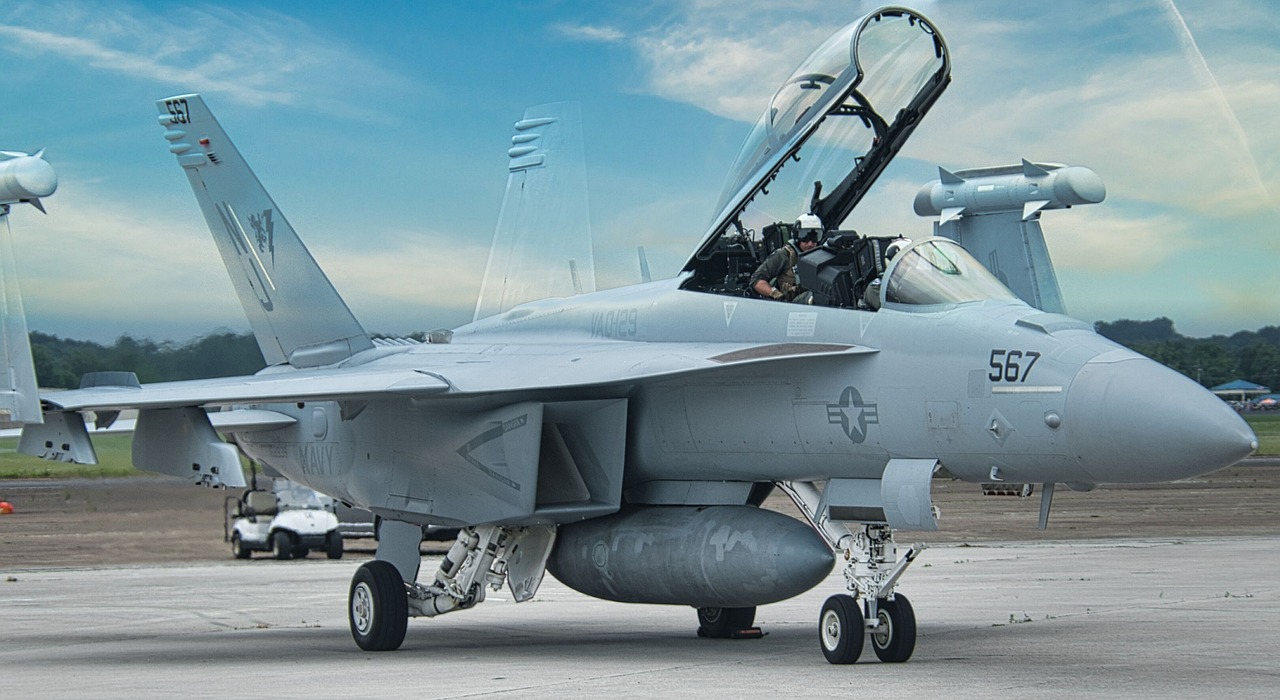
Next-Generation Combat Aircraft
The landscape of military aviation is undergoing a dramatic transformation, and at the forefront of this change are the . These advanced machines are not just about firepower; they embody a fusion of cutting-edge technology, innovative design, and strategic foresight. Imagine a fighter jet that can think on its feet, adapt to changing battlefield conditions, and execute complex missions with minimal human intervention. Sounds like something out of a sci-fi movie, right? But it’s fast becoming a reality.
One of the most exciting aspects of next-generation combat aircraft is their enhanced capabilities. These aircraft are designed to operate in highly contested environments where traditional air superiority is no longer guaranteed. With advancements in stealth technology, they can evade radar detection more effectively than ever before. This is crucial because, in modern warfare, being seen often means being targeted. The latest innovations in materials and design contribute to this stealth capability, making these aircraft not only harder to detect but also more efficient in terms of fuel consumption and operational range.
When we talk about next-generation fighter jets, we cannot ignore the incorporation of artificial intelligence. AI is revolutionizing how these aircraft are designed and operated. For instance, imagine a jet that can analyze vast amounts of data in real-time, providing the pilot with actionable insights during combat. This is not just about improving performance; it's about survival and mission success in an increasingly complex battlefield. The integration of AI into combat aircraft allows for enhanced situational awareness, predictive maintenance, and even autonomous mission execution in certain scenarios.
Moreover, the design of next-generation combat aircraft is also shifting towards a network-centric approach. This means that these aircraft can communicate seamlessly with other platforms, whether they be drones, ground forces, or naval vessels. This interconnectedness is vital for modern warfare, where the ability to share information quickly can be the difference between victory and defeat. Imagine a scenario where a fighter jet receives real-time data from a satellite and adjusts its flight path to avoid incoming threats based on that information. This level of integration is becoming the norm.
However, with all these advancements come challenges. The development of next-generation combat aircraft involves substantial investment and a long timeline. Countries around the world are racing to develop these technologies, leading to a new arms race in the skies. As nations invest billions in research and development, they must also consider the implications of these technologies on global security and military strategy. The stakes are high, and the potential for conflict is ever-present.
To summarize, next-generation combat aircraft represent a significant leap forward in military aviation. They are not just machines; they are complex systems designed to operate in an unpredictable and dangerous environment. As technology continues to evolve, so too will the capabilities of these aircraft, shaping the future of warfare in ways we are only beginning to understand. Are we ready for what’s next?
- What are next-generation combat aircraft?
Next-generation combat aircraft are advanced military jets that incorporate cutting-edge technology, including artificial intelligence, stealth capabilities, and enhanced connectivity for improved performance in modern warfare. - How does AI improve combat aircraft?
AI enhances combat aircraft by providing real-time data analysis, improving situational awareness, enabling predictive maintenance, and allowing for autonomous mission execution in certain scenarios. - What is the importance of stealth technology?
Stealth technology is crucial for next-generation combat aircraft as it allows them to evade radar detection, making them more effective in contested environments and increasing their chances of mission success. - What challenges are associated with developing next-generation aircraft?
The development of next-generation aircraft involves significant financial investment, long timelines, and the need to address global security implications, as nations compete to advance their military capabilities.

Stealth Technology Innovations
Stealth technology has become a cornerstone of modern military aviation, playing a vital role in the design and functionality of advanced combat aircraft. The essence of stealth lies in the ability to evade detection by enemy radar and other surveillance systems, ensuring that military assets can operate with a significant tactical advantage. Recent innovations in this field have propelled military aviation into a new era, where the line between visibility and invisibility is increasingly blurred.
One of the most exciting developments in stealth technology is the use of advanced materials and design techniques. For instance, radar-absorbing materials (RAM) are engineered to absorb rather than reflect radar waves, making aircraft less detectable. These materials are often combined with innovative shapes that minimize radar cross-sections. The result is an aircraft that can penetrate enemy airspace with reduced risk of being targeted.
Moreover, the integration of active stealth systems is changing the game. These systems utilize electronic warfare capabilities to jam or confuse enemy radar systems. By emitting signals that mimic the aircraft's own radar signature, they can create a deceptive picture on enemy screens. This technology not only enhances survivability but also allows for greater operational flexibility in contested environments.
Another significant innovation is the development of low observable (LO) technologies. These technologies focus on reducing the infrared signature of aircraft, making them harder to detect via heat-seeking missiles. Techniques such as engine exhaust cooling and the use of special coatings can significantly diminish the thermal footprint of an aircraft, providing additional layers of stealth.
To illustrate the advancements in stealth technology, consider the following table that compares traditional stealth features with modern innovations:
| Feature | Traditional Stealth | Modern Innovations |
|---|---|---|
| Radar Absorption | Basic RAM | Advanced multi-layer RAM |
| Shape Design | Angular surfaces | Blended wing-body designs |
| Electronic Warfare | Passive jamming | Active electronic warfare systems |
| Infrared Signature | Basic heat shielding | Advanced cooling techniques |
As we look to the future, the ongoing research and development in stealth technology promise to yield even more remarkable advancements. The potential integration of artificial intelligence in stealth operations could lead to smarter, more adaptive stealth systems that respond dynamically to threats. Imagine an aircraft that can not only evade detection but also predict enemy movements and adjust its course in real-time!
In conclusion, the innovations in stealth technology are not just about making aircraft invisible; they are about redefining the very nature of air combat. As these technologies continue to evolve, they will undoubtedly play a crucial role in shaping the strategies of future conflicts, ensuring that military forces maintain their edge in an increasingly complex battlefield.
- What is stealth technology? Stealth technology refers to a set of techniques used to make military vehicles, particularly aircraft, less detectable by radar, infrared, and other detection methods.
- How does radar-absorbing material work? Radar-absorbing materials are designed to absorb radar waves, thereby reducing the reflection that can be detected by enemy radar systems.
- What are low observable technologies? Low observable technologies are methods used to minimize an aircraft's visibility to radar and infrared detection, enhancing its survivability in combat.
- Can AI enhance stealth capabilities? Yes, AI can analyze data in real-time and adapt stealth strategies, potentially improving an aircraft's ability to evade detection and respond to threats.
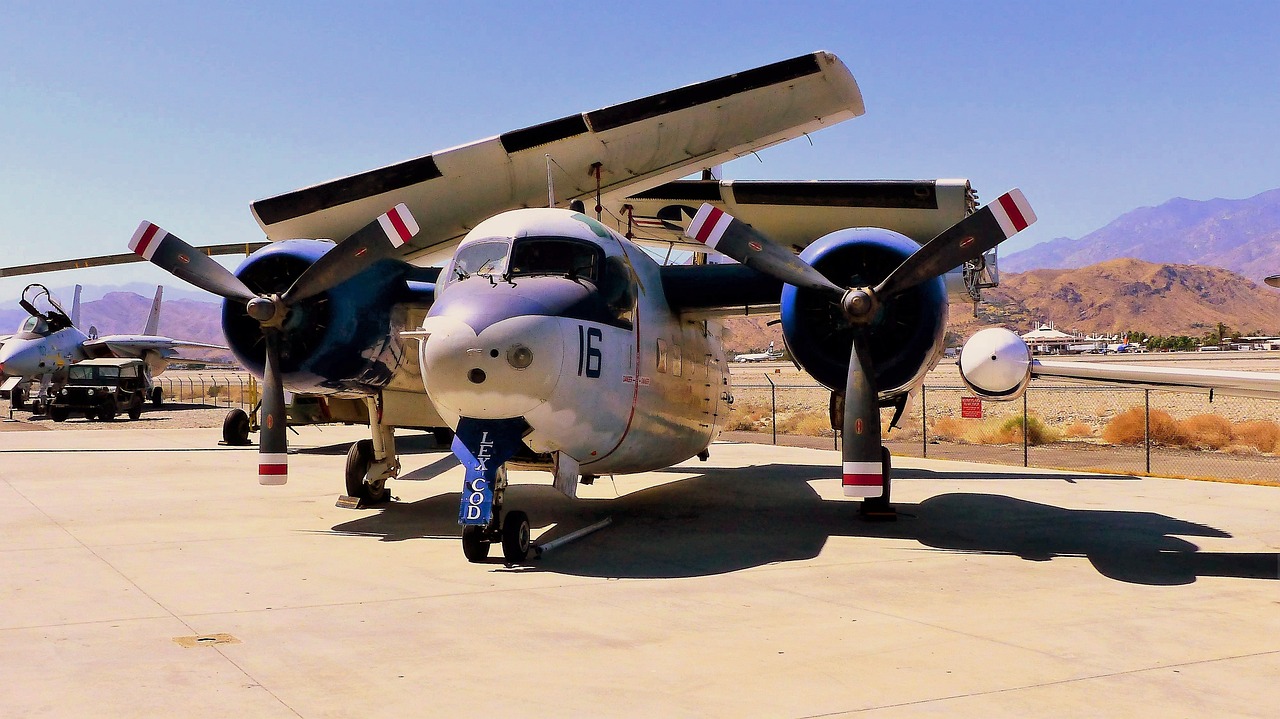
Hypersonic Flight Capabilities
When we talk about the future of military aviation, one term that often takes center stage is hypersonic flight. This technology, which refers to speeds exceeding Mach 5, is not just a fascinating concept; it's a game-changer in the realm of air combat. Imagine aircraft that can travel faster than five times the speed of sound, reaching their targets in mere minutes rather than hours. This capability transforms the dynamics of warfare, making traditional defense systems obsolete in a blink of an eye.
Hypersonic flight capabilities offer several strategic advantages that are hard to ignore. For one, these aircraft can cover vast distances quickly, allowing for rapid response to emerging threats. This speed means that they can strike before an adversary has the chance to react, effectively turning the tables in any conflict. Additionally, hypersonic vehicles can maneuver in ways that traditional missiles cannot, making them difficult to track and intercept. This presents a significant challenge for existing air defense systems, which are often designed to counter slower, more predictable threats.
One of the most exciting aspects of hypersonic technology is its potential for multi-role operations. Hypersonic vehicles can be equipped for various missions, including reconnaissance, strike, and even electronic warfare. This versatility allows military forces to adapt quickly to changing battlefield conditions, ensuring they maintain the upper hand. Furthermore, hypersonic technology can be integrated with existing platforms, enhancing their capabilities without the need for entirely new aircraft.
However, the development of hypersonic flight is not without its challenges. The engineering required to sustain such high speeds poses significant technical hurdles. For instance, the materials used in hypersonic vehicles must withstand extreme temperatures and pressures. This has led to exciting innovations in materials science, as researchers seek to create lighter, stronger, and more heat-resistant materials. The table below summarizes some of the key materials currently being explored for hypersonic applications:
| Material | Properties | Applications |
|---|---|---|
| Carbon-Carbon Composites | High thermal resistance, lightweight | Leading edge of wings, nose cones |
| Refractory Metals | High melting point, strong | Structural components |
| Thermal Protection Systems (TPS) | Insulation against extreme heat | Surface coatings |
As we look to the future, the race for hypersonic supremacy is heating up. Nations around the world are investing heavily in research and development to harness this technology. The implications for global security are profound; hypersonic capabilities could shift the balance of power, making it crucial for military strategists to adapt their approaches. The question remains: how will this technology redefine the rules of engagement in the skies?
- What are hypersonic flight capabilities?
Hypersonic flight refers to speeds greater than Mach 5, enabling aircraft to travel faster than five times the speed of sound. - What advantages do hypersonic vehicles offer?
They provide rapid response times, enhanced maneuverability, and the ability to perform multi-role operations, making them a formidable asset in military strategy. - What challenges are faced in developing hypersonic technology?
Technical hurdles include the need for materials that can withstand extreme temperatures and pressures, as well as the engineering challenges of sustaining flight at such high speeds. - How does hypersonic technology impact global security?
The introduction of hypersonic capabilities could shift the balance of power among nations, prompting military strategists to rethink their defense and engagement strategies.
Frequently Asked Questions
-
What are the latest advancements in drone technology for military use?
Unmanned aerial vehicles (UAVs) are at the forefront of military innovation. Recent advancements include enhanced surveillance capabilities, longer flight durations, and improved payloads. These drones are now equipped with sophisticated sensors and AI-driven systems that allow them to conduct reconnaissance missions and engage in combat with minimal human intervention, making them invaluable assets on the battlefield.
-
How is artificial intelligence changing flight operations in military aviation?
AI is revolutionizing military aviation by optimizing flight operations and decision-making processes. From autonomous piloting to mission planning, AI systems analyze vast amounts of data rapidly, enabling pilots to make informed decisions quickly. This integration not only enhances operational efficiency but also reduces the cognitive load on human pilots, allowing them to focus on critical tasks during missions.
-
What challenges do autonomous flight systems face?
While autonomous flight systems offer tremendous potential, they also come with challenges. Key issues include ensuring reliability in complex environments, managing cybersecurity threats, and addressing ethical concerns regarding automated decision-making in combat scenarios. Furthermore, the transition from traditional piloting to fully autonomous systems requires extensive testing and regulatory approval to ensure safety and effectiveness.
-
How does human-machine collaboration work in military aviation?
Human-machine collaboration involves leveraging AI to assist human pilots in various tasks. This partnership enhances situational awareness, improves mission outcomes, and reduces the risk of human error. However, it also raises concerns about over-reliance on technology and the potential for miscommunication between humans and machines during high-stress situations.
-
What role does AI play in aircraft maintenance and logistics?
AI significantly improves aircraft maintenance and logistics by predicting maintenance needs, optimizing supply chains, and ensuring that aircraft are mission-ready. By analyzing data from various sources, AI can identify potential issues before they become critical, reducing downtime and enhancing overall operational efficiency.
-
What innovations are being made in materials and design for military aircraft?
Innovations in materials science are leading to the development of lighter and stronger aircraft. These advancements improve fuel efficiency and overall performance, allowing military aircraft to carry more payload while consuming less fuel. New materials, such as composites and advanced alloys, also enhance durability and resistance to harsh environments, making them ideal for military applications.
-
What features define next-generation combat aircraft?
Next-generation combat aircraft are characterized by advanced stealth capabilities, superior maneuverability, and cutting-edge avionics. These aircraft are designed to operate in contested environments, using technologies that allow them to evade detection and engage targets effectively. Features such as integrated sensor systems and advanced weaponry further enhance their combat effectiveness.
-
How is stealth technology evolving in military aviation?
Stealth technology is continuously evolving, with innovations aimed at reducing radar cross-sections and improving thermal signatures. New materials and design techniques, such as shaping and radar-absorbing coatings, are being developed to enhance stealth capabilities. These advancements are crucial for ensuring that military aircraft can operate undetected in hostile environments.
-
What are hypersonic flight capabilities, and why are they important?
Hypersonic flight capabilities refer to speeds greater than Mach 5, which can revolutionize air combat. Hypersonic aircraft can respond to threats more rapidly and evade interception due to their speed and maneuverability. This technology offers significant strategic advantages, making it a focal point of military aviation research and development.
















